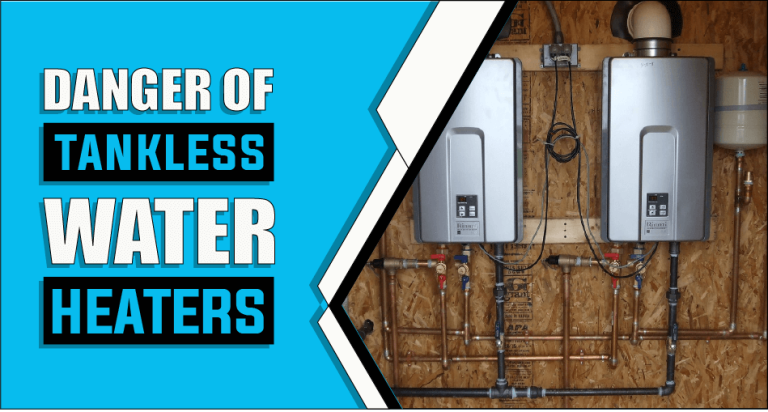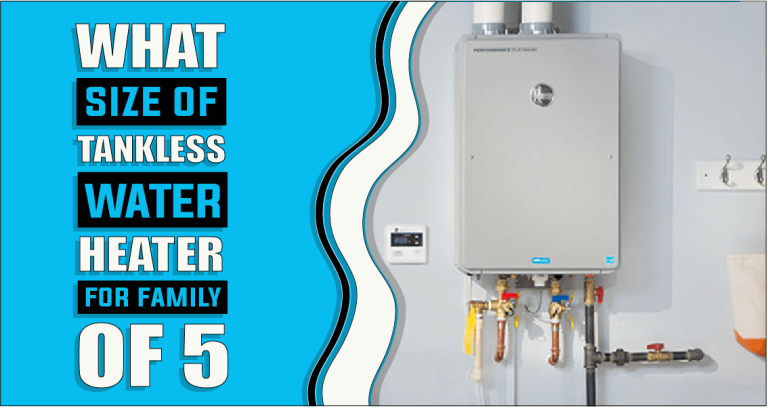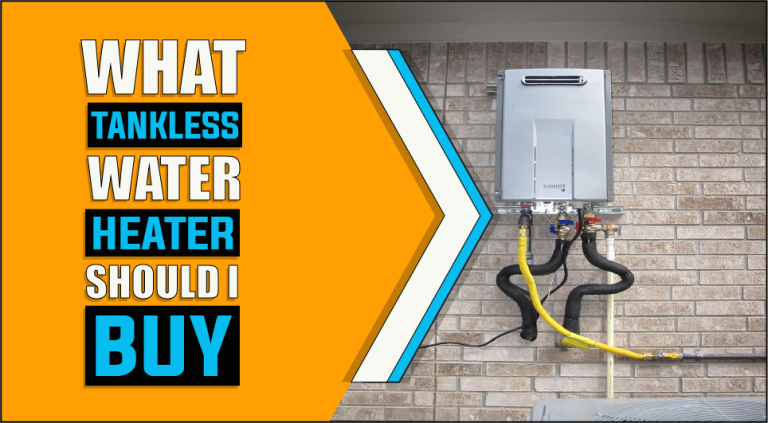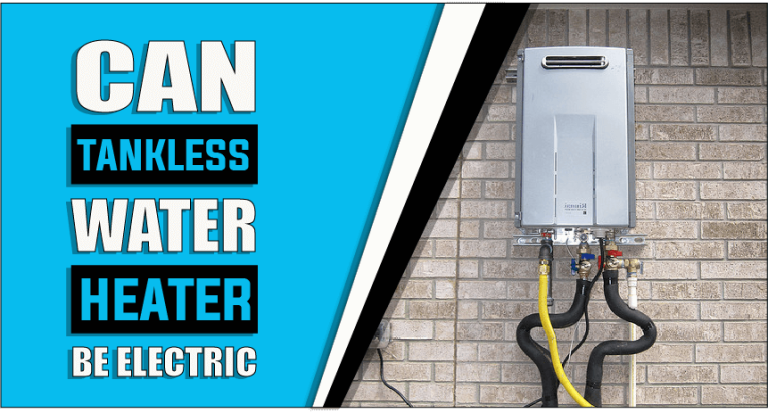Do You Need A Recirculating Pump With A Tankless Water Heater | Deciphering Necessity?
Tankless water heaters have gained popularity recently due to their energy-efficient and on-demand hot water capabilities. These systems provide homeowners with the convenience of instant hot water while reducing energy consumption. Now, a query will probably pop up in your mind about whether or not a recirculating pump is necessary. While tankless water heaters provide hot water on demand, there can be a delay in receiving hot water at faucets farther away from the heater. This delay can result in wasted water and frustration for homeowners. In this scenario, the recirculating pump helps address this issue by circulating hot water throughout the plumbing system, ensuring quick access to hot water at all fixtures. But do you need a recirculating pump with a tankless water heater? Today, we’ll discuss the convenience and time-saving benefits of using a recirculating pump and its potential impact on energy savings and water conservation. Let’s get started!
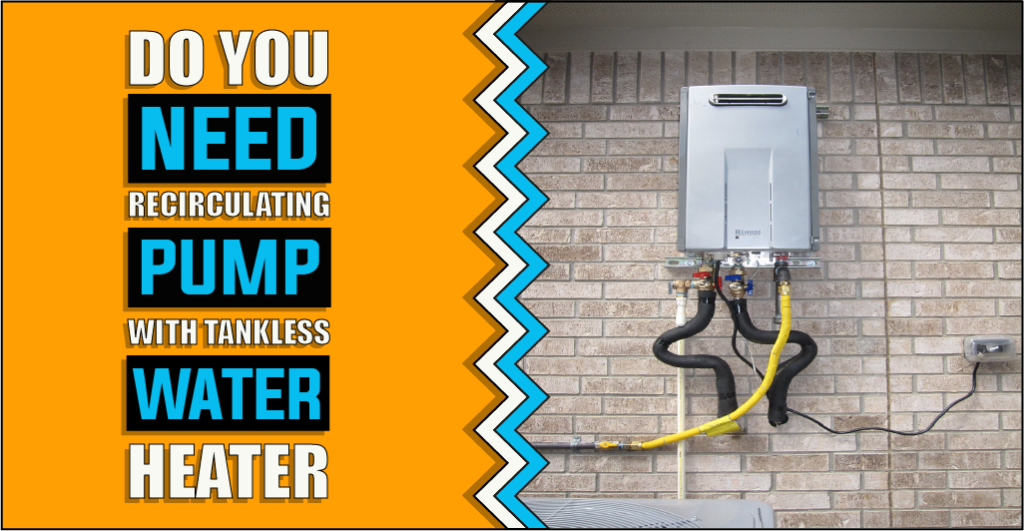
An overview of recirculating pumps
Recirculating pumps are essential for plumbing systems that provide hot water quickly and efficiently. They work by continuously circulating hot water throughout the pipes, ensuring instant access to hot water at every faucet in your home.
One of the primary advantages of recirculating pumps is the convenience they offer. With a recirculating pump installed, you no longer have to wait for hot water to reach the faucet. This saves you time and reduces water wastage as you no longer need to let the water run until it gets hot.
In addition to convenience, recirculating pumps can also lead to energy savings. By eliminating the need to run the tap and wait for hot water, you effectively reduce the energy required to heat the water. This can result in lower energy bills over time.
How do I determine if I need a recirculating pump?
Determining if you need a recirculating pump with your tankless water heater involves considering several factors related to your hot water usage patterns and the layout of your plumbing system. Here’s how to assess whether a recirculating pump is necessary for your home:
- Assessing Your Hot Water Needs
To decide if a recirculating pump is necessary, evaluate your hot water requirements. Consider your household size and how frequently you use hot water daily. If you often find yourself waiting for hot water or wasting water while it heats up, a recirculating pump may be beneficial.
- Measuring Distance to Fixtures
The distance between your water heater and the faucets or showers in your home is crucial. If your fixtures are far from the water heater, hot water can take a while to reach them. A recirculating pump can help by constantly circulating hot water through the pipes, reducing wait times.
- Energy Efficiency Concerns
It’s essential to consider the energy efficiency of a recirculating pump. Some models have features like timers or smart controls to minimize energy consumption during low hot water demand periods. Weigh the potential energy savings against the energy the pump consumes.
- Frequency of Use
Consider how often you use hot water in your daily routine. A recirculating pump can be more advantageous if you have a busy household with multiple people using hot water simultaneously. On the other hand, if hot water usage is sporadic, you may not need the continuous hot water circulation that a pump provides.
- Cost and Installation
Lastly, factor in the cost of purchasing and installing a recirculating pump. While some people may be comfortable with DIY installation, others may need professional help. Consider your budget and the long-term savings potential when deciding whether a recirculating pump is right for you.
Incredible benefits of using a recirculating pump
Using a recirculating pump in your plumbing system offers several benefits that can enhance your overall water usage experience.
- One of the primary advantages is the convenience of instant hot water at every faucet in your home. With a recirculating pump, there’s no need to wait for the water to heat up before use, saving you time and eliminating frustration.
- In addition to convenience, a recirculating pump can lead to significant water savings. Rather than wasting gallons of water while waiting for it to get hot, the pump continuously circulates hot water in the pipes, ensuring that it is readily available when needed. This not only reduces water wastage but also contributes to conservation efforts.
- This type of pump is improved energy efficiency. By providing instant hot water, the pump eliminates the need to run the tap and wait for hot water, reducing energy consumption. Ultimately, it can result in lower utility bills and a more environmentally friendly home.
- Last but not least, it also helps maintain consistent water temperatures throughout your plumbing system. It eliminates temperature fluctuations, ensuring each faucet delivers hot water at a desired and consistent temperature.
Now that you know the perks, you might use recirculating pumps with tankless water heaters. Could you keep reading to know how it works?
How Tankless Water Heaters Work
Tankless water heaters, or on-demand or instantaneous water heaters, are innovative appliances designed to provide hot water exactly when you need it without needing a storage tank. Unlike traditional water heaters that store and continually heat a large volume of water, tankless units heat water only as it flows through the device. This heating method offers several advantages regarding energy efficiency, space-saving, and continuous hot water availability. To understand how tankless water heaters work, let’s dive into the mechanics behind their operation:
1. Water Flow Initiation:
The process begins when you turn on a hot water tap in the bathroom, kitchen, or any other point in your home. The water flow triggers a sensor within the tankless water heater, signalling it to start heating.
2. Cold Water Inlet:
Cold water from the main supply enters the tankless unit through an inlet pipe. The tankless water heater is designed with high-powered electric elements or a gas burner, depending on the model.
3. Heat Exchange:
The cold water enters the unit and passes through a heat exchanger. In gas-powered models, the burner ignites to heat the heat exchanger, while electric models use heating elements to achieve the same effect.
The heat exchanger quickly raises the cold water temperature to your desired hot water temperature.
4. Hot Water Outlet:
Once the water reaches the set temperature, it exits the tankless unit and flows directly to your faucet or showerhead. The hot water is delivered instantly, eliminating the need for a storage tank to keep a large volume of water hot at all times.
5. Continuous Hot Water:
Tankless water heaters are designed to provide a continuous hot water supply as long as the hot water tap remains open. There is no risk of running out of hot water, making them ideal for households with high hot water demands.
6. Shutting Down:
When you turn off the hot water tap, the tankless water heater senses the reduced water flow and shuts down. The heating process stops, and the unit enters a standby mode until hot water is needed again. Whether you opt for a gas or electric model, their on-demand heating process ensures you have hot water precisely when and where you need it, all while reducing energy consumption and saving space in your home.
Can you get instant hot water without a recirculating pump?
Recirculating pumps are commonly used to provide instant hot water in homes, but alternative methods exist to achieve the same result without a pump. This section will explore effective ways to get instant hot water without a recirculating pump.
1. Point-of-Use Water Heaters
Point-of-use water heaters are compact, tankless units installed directly at the fixture or appliance where hot water is needed. They heat water on demand, eliminating the need for a recirculating system. Here’s how they work:
- Installation: Point-of-use water heaters can be installed under sinks, near showers, or even in the kitchen. They are electric and require a dedicated electrical circuit.
- Instant Heating: These units quickly heat water as it flows through them, ensuring hot water is available instantly at the connected fixture.
- Energy Efficiency: Point-of-use water heaters are energy-efficient because they only heat water when needed, reducing standby heat loss.
While point-of-use water heaters are effective at providing instant hot water, they are best suited for specific areas or appliances, not whole-house hot water delivery.
2. Hot Water Recirculation Systems Without Pumps
Some hot water recirculation systems can work without pumps by utilizing the existing water pressure in your plumbing. Here’s how:
- Thermal Recirculation Systems: These systems use gravity and the principle that hot water rises to create a circulation loop. Hot water from the water heater rises to the fixtures while cold water flows back to the water heater. They rely on the temperature difference between the hot and cold water to drive the flow.
3. Insulate Hot Water Pipes
One of the simplest ways to get hot water faster at your fixtures is to insulate your hot water pipes. This reduces heat loss and ensures that hot water retains its temperature as it travels through the plumbing system. Here’s what you need to know:
- Materials: Pipe insulation sleeves or wraps are readily available at hardware stores and are easy to install.
- DIY Installation: You can install insulation by wrapping it around accessible hot water pipes in your home. Be sure to secure it properly.
Insulating your hot water pipes reduces the wait time for hot water at your fixtures, as less heat is lost in transit.
4. Smart Water Heater Timers and Controls
Modern water heaters often come equipped with smart controls to schedule when the water heater should operate. Setting the timer to operate during peak usage times ensures hot water is readily available when needed. Here’s how it works:
- Programming: Smart controls can be programmed to activate the water heater before you typically need hot water, ensuring it’s ready when you want to use it.
- Energy Savings: Timers can also help you conserve energy by preventing the water heater from running continuously.
While not a proper instant hot water solution, smart timers and controls can help you optimize your water heating schedule to match your household’s hot water demands.
5. Dedicated Return Line
In some cases, homes are plumbed with a dedicated return line that connects the hot water line at the furthest fixture back to the water heater. This return line creates a continuous loop, allowing hot water to circulate back to the water heater when not in use, preventing cold water from accumulating in the pipes.
Installing a dedicated return line is more feasible during new construction or significant plumbing renovations, and it can be effective at providing faster hot water to all fixtures in the home.
These alternatives to recirculating pumps offer various ways to achieve instant hot water in your home, depending on your specific needs and plumbing setup. Consider the options that align with your situation and preferences for efficient hot water delivery!
Frequently Asked Questions
A recirculating pump is an additional component that can be installed with a tankless water heater system. It helps circulate hot water through the plumbing pipes, ensuring instant hot water is available at all fixtures without waiting to heat up.
Yes, there are some drawbacks to consider. Recirculating pumps consume electricity, which can lead to higher energy costs. Additionally, they may require regular maintenance and installation expenses. It’s essential to weigh the potential benefits against these factors before installing a recirculating pump.
A tankless water heater can work perfectly fine without a recirculating pump. It will still provide hot water on demand, albeit with a slight delay, as the water needs to travel through the plumbing pipes to reach the fixtures.
It is possible to retrofit a recirculating pump to an existing tankless water heater system. However, the installation process may vary depending on the specific plumbing configuration of your home or building. It’s recommended to consult with a plumbing professional to ensure proper installation and compatibility with your tankless water heater system.
Conclusion
In conclusion, the need for a recirculating pump with a tankless water heater depends on various factors and individual preferences. While recirculating pumps can offer convenience by providing instant hot water at any fixture, they may not be necessary in all situations. Ultimately, the decision to use a recirculating pump with a tankless water heater should be based on individual needs, preferences, and the specific circumstances of each household or building. In the end, consulting with a plumbing professional is advisable to assess the feasibility and potential benefits of installing a recirculating pump in conjunction with a tankless water heater.
Ella John is passionate about helping her readers make the best choice when purchasing a heater. She understands that selecting a heater can be difficult and strives to provide information to help make the decision easier. Ella’s website, Heatersinfo.com, provides valuable insight into heating trends and types of heaters and tips on how to care for them. She also advises selecting the right heater based on individual needs and preferences. Her expertise in electronics makes her an excellent source of knowledge, and she is confident that anyone who visits her website will find the perfect heater information for their needs. Ella’s dedication to helping others make educated decisions about buying the right heater is unparalleled, and she hopes to continue offering her expertise for many years. With Ella’s help, finding the perfect heater can be a breeze!

